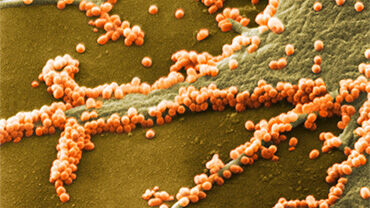Risk assessment: Swine-origin triple reassortant influenza A(H3N2) variant viruses in North America
Human infections with a novel influenza A(H3N2) variant virus of swine origin (A(H3N2)v) including a genetic component from the 2009 pandemic virus have been reported in the United States since July 2011. Following substantial increased reporting this summer, ECDC updated its risk assessment from last year.
Executive Summary
Human infections with a novel influenza A(H3N2) variant virus of swine origin (A(H3N2)v) including a genetic component from the 2009 pandemic virus have been reported in the United States since July 2011. Following substantial increased reporting this summer, ECDC updated its risk assessment from last year.
From July 2011 to April 2012, 13 cases were reported, while a further 153 cases have been reported between July and 9 August 2012. Although most cases occurred in Indiana and Ohio, nine US States were involved (Indiana, Iowa, Maine, Pennsylvania, Utah, West Virginia, Hawaii, Illinois, and Ohio).
The majority of the persons infected had contact with swine or attended an agricultural fair where swine were present. However, some limited human-to-human transmission has been reported in households and a child care setting.
The majority of infections occurred in children and adolescents under 18 years. No serious complications or deaths have been reported, and most of the cases resulted in symptoms similar to uncomplicated seasonal influenza infection, such as fever, cough, pharyngitis, rhinorrhea, myalgia and headache. Influenza A(H3N2)v infections can therefore not be distinguished in their clinical features from seasonal influenza.
In EU/EEA Member States the novel influenza A(H3N2)v viruses have not been identified in pigs, and no human influenza A(H3N2)v virus infections have been reported. Therefore, there is currently no known risk of becoming infected with the influenza A(H3N2)v viruses in Europe (EU/EEA countries).
As transmission of the disease is mainly related to direct contact with infected pigs, travellers to the affected states in the USA who have contact with pigs in farms or visit agricultural exhibitions may be at risk of being infected. In case they develop influenza-like symptoms after swine exposure, clinicians should consider and sample for the influenza A(H3N2)v viruses.
It is possible that these variant virus infections will appear in Europe, particularly if there is more human-to-human transmission or travellers visiting US agricultural exhibitions, which could lead to imported cases. It is important to ensure that there is at least capacity in one national centre for detecting these viruses in EU/EEA countries. ECDC and the Community Network of Reference Laboratories (CNRL) have initiated work to assess and strengthen laboratory capacity in Europe for detecting influenza A(H3N2)v, should it appear in persons in Europe.






